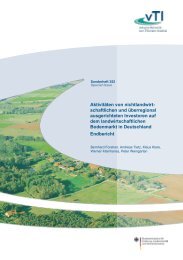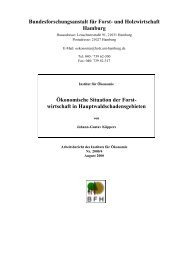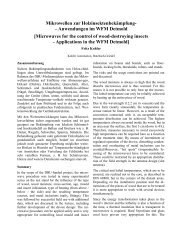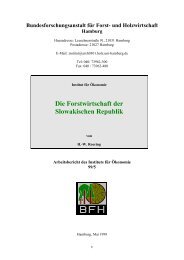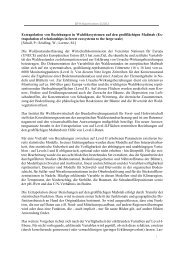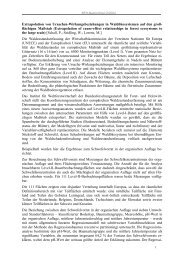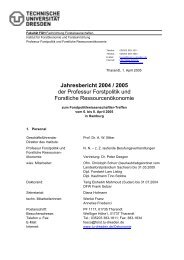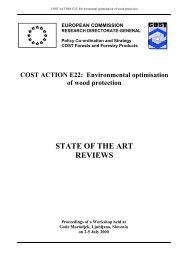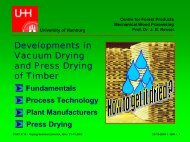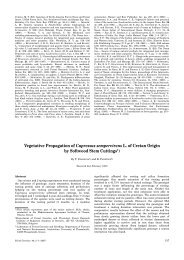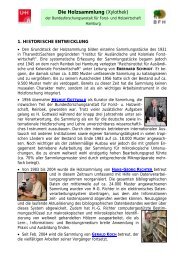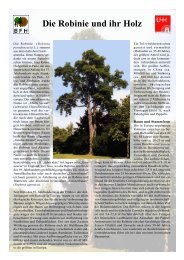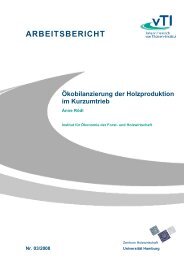kinetic response of thermosetting adhesive systems to heat
kinetic response of thermosetting adhesive systems to heat
kinetic response of thermosetting adhesive systems to heat
You also want an ePaper? Increase the reach of your titles
YUMPU automatically turns print PDFs into web optimized ePapers that Google loves.
Shear Strength [N/mm²]<br />
2,0<br />
1,5<br />
1,0<br />
0,5<br />
150°C 125°C 100°C<br />
0,0<br />
0 50 100 150 200 250<br />
Pressing Time [s]<br />
Figure 9 - Shear strength development <strong>of</strong> resinated fiber discs at 400 kg/m³ (hollow dots<br />
are measured data while filled ones are the inferred <strong>adhesive</strong> contribution <strong>to</strong> shear<br />
strength)<br />
CONCLUSIONS<br />
Two methods, one physico-chemical (DSC) and one mechanical (ABES), have been<br />
presented <strong>to</strong> characterize <strong>adhesive</strong> <strong>systems</strong> (UF and UF-m) with different molar ratios and<br />
different melamine content. The <strong>kinetic</strong> <strong>response</strong> <strong>of</strong> <strong>thermosetting</strong> <strong>adhesive</strong>s <strong>to</strong> <strong>heat</strong> has been<br />
described in terms <strong>of</strong> reactivity indices and activation energy values (following Kissinger’s<br />
method for the former). With the ABES approach, <strong>thermosetting</strong> <strong>adhesive</strong>s have been cured at<br />
different temperatures (95°C-125°C) and subsequently destructively tested in shear mode.<br />
Veneer strips are used as wooden adherends. The reactivity index <strong>of</strong> the <strong>adhesive</strong> <strong>systems</strong> have<br />
been determined by plotting the natural logarithm <strong>of</strong> regressed isothermal bonding rates against<br />
the reciprocal <strong>of</strong> absolute temperature. Taking activation energy indices <strong>of</strong> all tested <strong>adhesive</strong>s a<br />
satisfying conformity can be seen when comparing ABES and DSC.<br />
In the second part <strong>of</strong> the study, a method has been summarized which may be used <strong>to</strong><br />
determine bond strength development <strong>of</strong> fibrous composite material. Miniature MDF-like fiber<br />
discs have been formed and subsequently tested in shear mode. Initial results are encouraging:<br />
resinated wood fibrous material pressed under controlled conditions <strong>of</strong> temperature, load and<br />
density have been presented. Internal mat characteristics have <strong>to</strong> be addressed when analyzing<br />
absolute strength values. Compared <strong>to</strong> ABES, which is a reliable method <strong>to</strong> determine strength <strong>of</strong><br />
partially cured bonds, the modified ABES approach makes it possible <strong>to</strong> explore the micromechanical<br />
behavior <strong>of</strong> resinated wood fiber mats.



